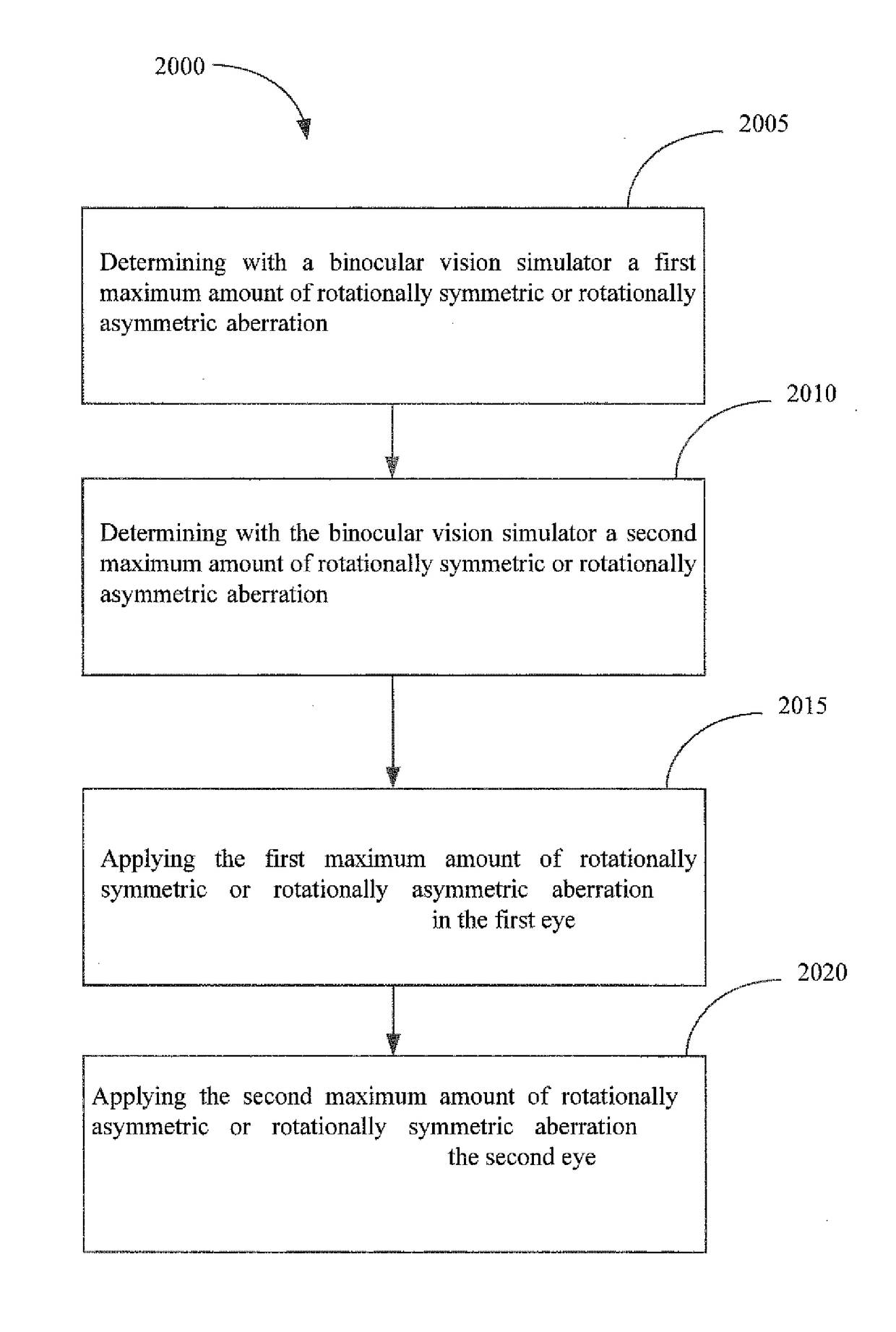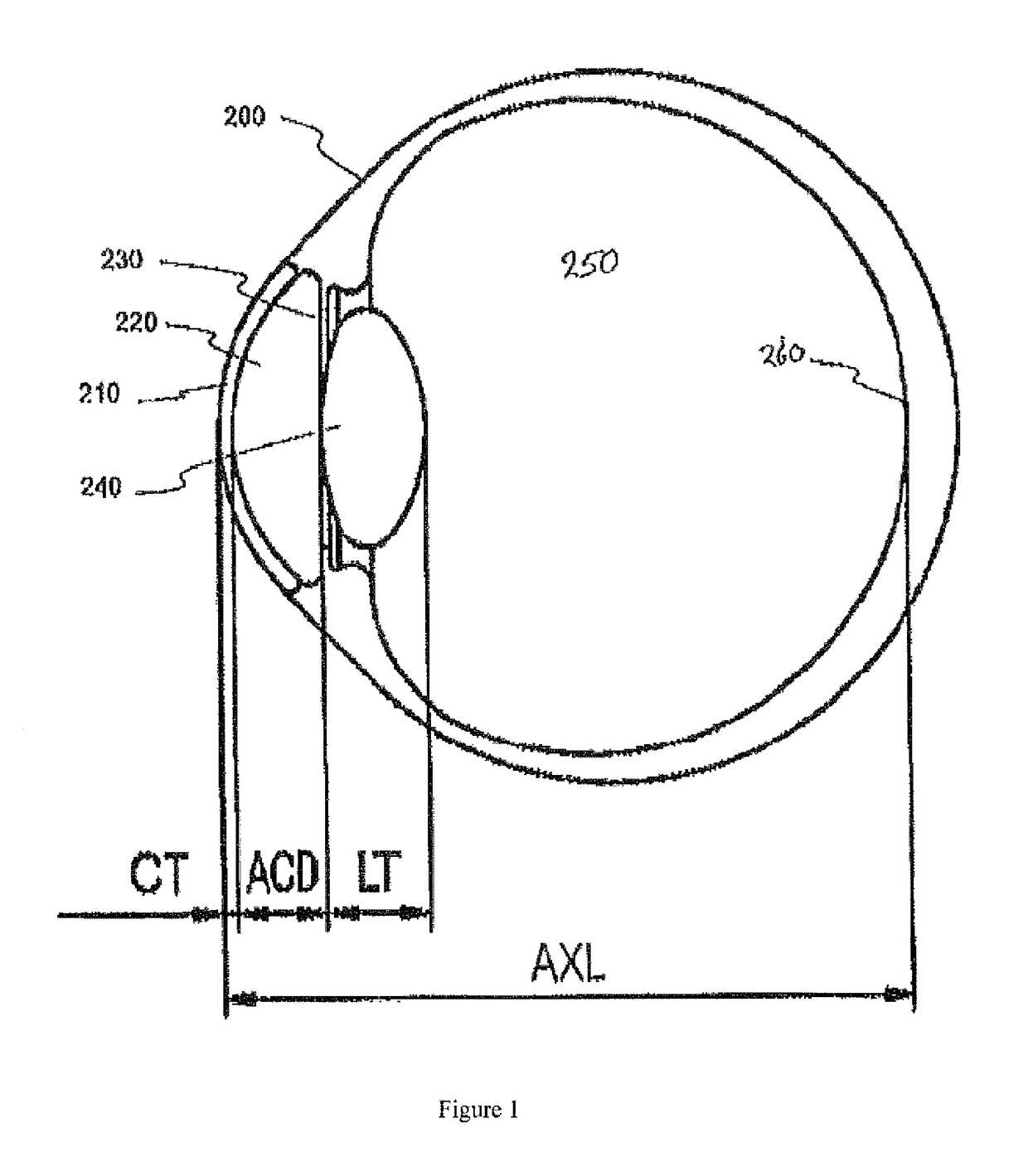Lenses, systems and methods for providing binocular customized treatments to correct presbyopia
a binocular and customized technology, applied in the field of eye defects, can solve the problems of affecting the quality of vision of patients, affecting the quality of vision of intermediate patients, and causing undesirable visual effects (dysphotopsia). achieve the effect of improving the quality of vision
- Summary
- Abstract
- Description
- Claims
- Application Information
AI Technical Summary
Benefits of technology
Problems solved by technology
Method used
Image
Examples
Embodiment Construction
[0018]It is to be understood that the figures and descriptions of the present invention have been simplified to illustrate elements that are relevant for a clear understanding of the present invention, while eliminating, for the purpose of clarity, many other elements found in typical lenses, lens systems and lens design methods. Those of ordinary skill in the arts can recognize that other elements and / or steps are desirable and may be used in implementing the embodiments described herein.
[0019]The embodiments described herein are directed to an ophthalmic lens, such as an intraocular lens (IOL), or a corneal implant, and other vision correction methodologies, such as laser treatments, and a system and method relating to same, for providing rotationally symmetric aberration patterns in one eye and non-rotationally symmetric aberration patterns in the other eye in order to induce a binocular customized treatment that achieves visual acuity at a range of distances.
[0020]The terms “pow...
PUM
 Login to View More
Login to View More Abstract
Description
Claims
Application Information
 Login to View More
Login to View More - R&D
- Intellectual Property
- Life Sciences
- Materials
- Tech Scout
- Unparalleled Data Quality
- Higher Quality Content
- 60% Fewer Hallucinations
Browse by: Latest US Patents, China's latest patents, Technical Efficacy Thesaurus, Application Domain, Technology Topic, Popular Technical Reports.
© 2025 PatSnap. All rights reserved.Legal|Privacy policy|Modern Slavery Act Transparency Statement|Sitemap|About US| Contact US: help@patsnap.com



